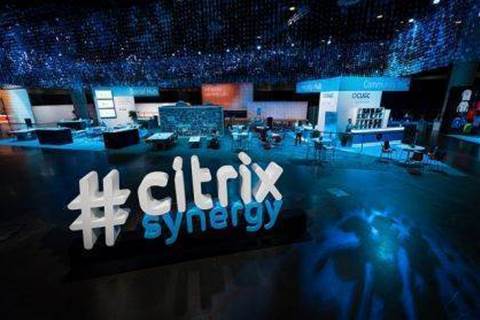Citrix CEO David Henshall has revealed the company is focusing incentives offered to its partners to nudge sluggish buyers into subscriptions, while also doing more education to clear some confusion about products.
Speaking on the vendor’s Q4 2019 results call, Henshall was asked how he plans to shift customers that bought perpetual licences and ongoing maintenance into Citrix’s new subscription services.
Henshall replied that Citrix is “not planning on any type of a forced migration” and still happily sells perpetual licences. But the company is empahsising subscriptions. And part of that means a change for the channel.
“We're also starting to incent channel partners on things like active use to make sure that not only are we migrating customers, but we're driving the right level of use and providing that platform, so that, as we get onto Workspace with Intelligence and some of these new capabilities, we have that pathway to sell new things, new updates, new add-ons, new capabilities,” Henshall said. “And so, that's the overall motion we're driving right now.
Another question asked “how you're thinking about sort of the evolution of the partner ecosystem as you guys are now starting to talk to decision makers outside just the IT universe?”
Henshall responded that “ … the conversation that I had sitting down with a large group of our global system integrator partners was much more focused on – this is a platform, this is one that a lot of them have been engaged in in terms of helping build out micro apps and things as beta customers and whatnot because the long-term engagement with them comes from how they build unique and differentiated businesses around some of these capabilities, not just using them as a tool as part of a larger engagement, but actually as a foundation to build a practice around it. That's the direction that we would be working with them on to help become real.”
Another item of interest for the channel came when Henshall was asked how Citrix had coped with Microsoft’s introduction of Windows Virtual Desktops (WVD), an offering that competes directly with Citrix’s own desktop virtualisation offerings, either on-prem or in Azure.
Henshall responded “WVD at a high level really opens up the awareness for virtualization as a platform. And we look at it as a platform or, in our language, a resource zone where we can allow customers to run parts of their infrastructure along with like on-prem or in another cloud or public cloud, et cetera. So, it's a resource zone from that respect.”
“When it was first announced, it created some market confusion,” Henshall added. “And so, between Citrix and Microsoft, we've been spending a lot of time educating our field. We just had our sales kickoff a week ago. We had Microsoft and Citrix on stage really talking to all of our partners and our sellers about what the real separation is, how to position and how we work together at this.”
Henshall was also able to discuss some nice numbers: revenue hit US$810 million in the fourth quarter and $3.0 billion for the full year, up one point year over year for both periods. Subscription revenue rose markedly, and subscription bookings as a percentage of total bookings was 69 percent, up from 51 percent in Q4 2018. Subscription bookings as a percentage of total product bookings rose to 62 percent, up from 42 percent in 2018.
Quarterly earnings were five cents per share above market estimates. Investors clearly liked this news: Citrix's share price popped by seven per cent after its results announcement.





_(11).jpg&h=142&w=230&c=1&s=1)




.jpg&w=100&c=1&s=0)
_(8).jpg&w=100&c=1&s=0)







.jpg&q=95&h=298&w=480&c=1&s=1)





